Lenovo Thunderbolt 3 Graphics Dock review: Glorious external NVIDIA GTX 1050 graphics
If your Ultrabook needs a graphics boost, Lenovo has you covered with a clever docking station.
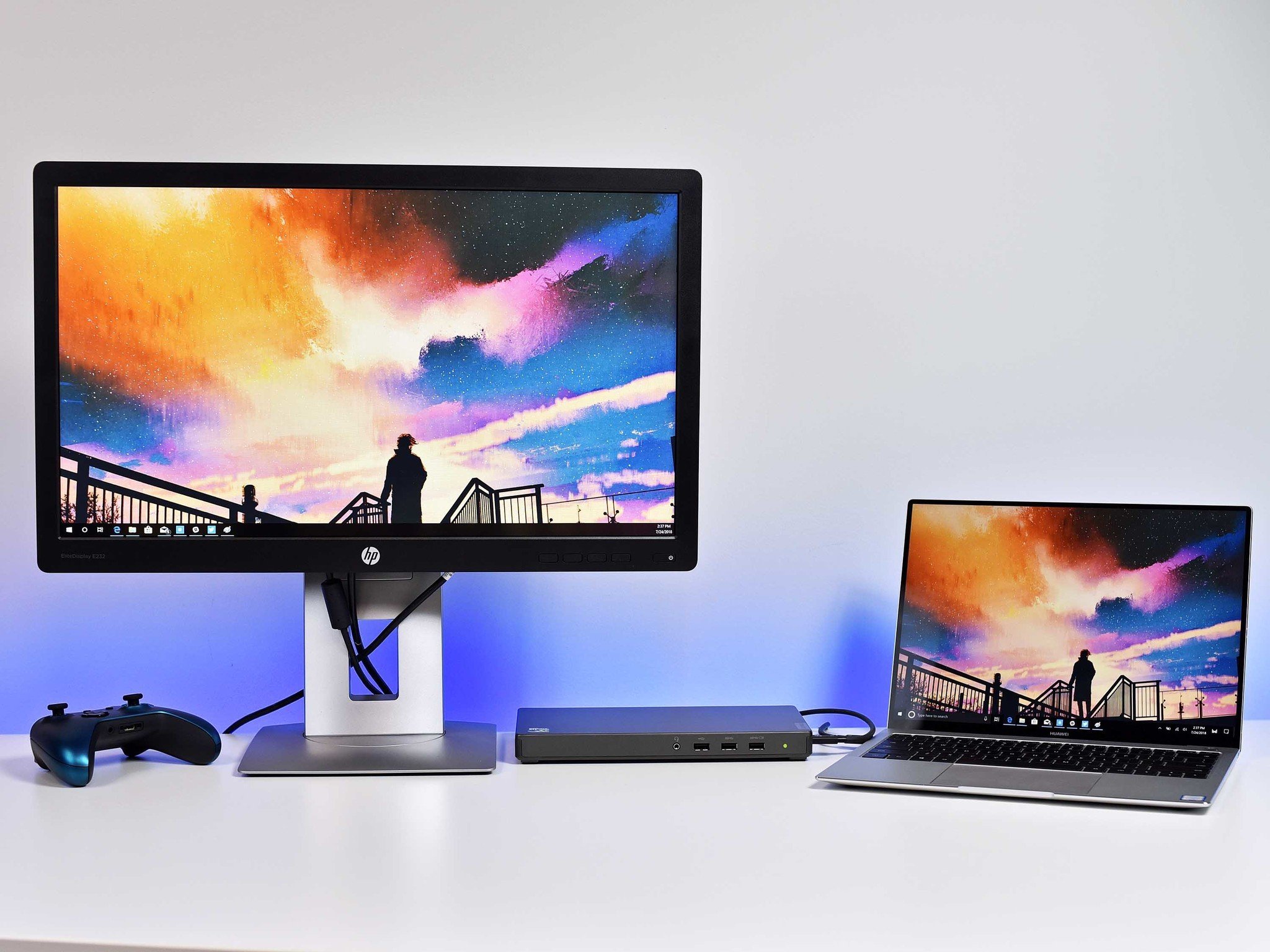
For a few years now, enterprise users have often grabbed docking stations with their favorite Ultrabook laptops. By allowing port expansion and multiple displays the docks, which are often not cheap, lets users have one computer to use all the time.
But what if you combined a port replicator dock with NVIDIA GTX 1050? That's exactly what Lenovo did with its Lenovo Thunderbolt 3 Graphics Dock (G0A10170UL), and today I'll tell if it's worth the $399.
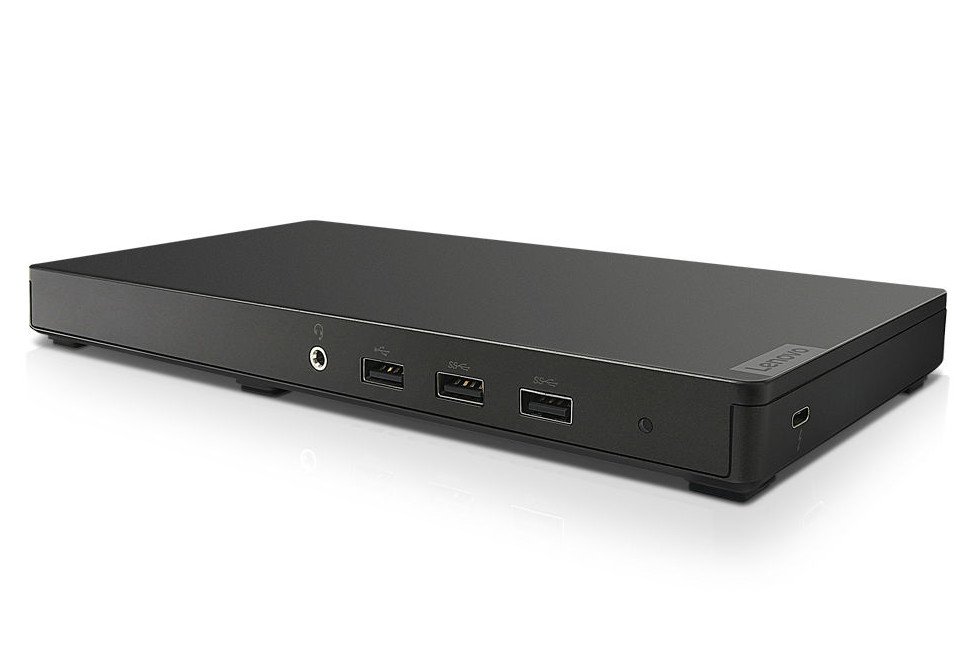
$399 as testedBottom line: Give your thin Ultrabook a power boost with a GTX 1050 and more ports.
For
- Portable, light and slim design.
- Can power three 4K displays.
- NVIDIA GTX 1050 graphics.
- Lets you do Windows Mixed Reality.
Against
- Not cheap.
- Cannot upgrade GPU later.
- Still can be finicky with drivers.
Lenovo Graphics Dock: What it is
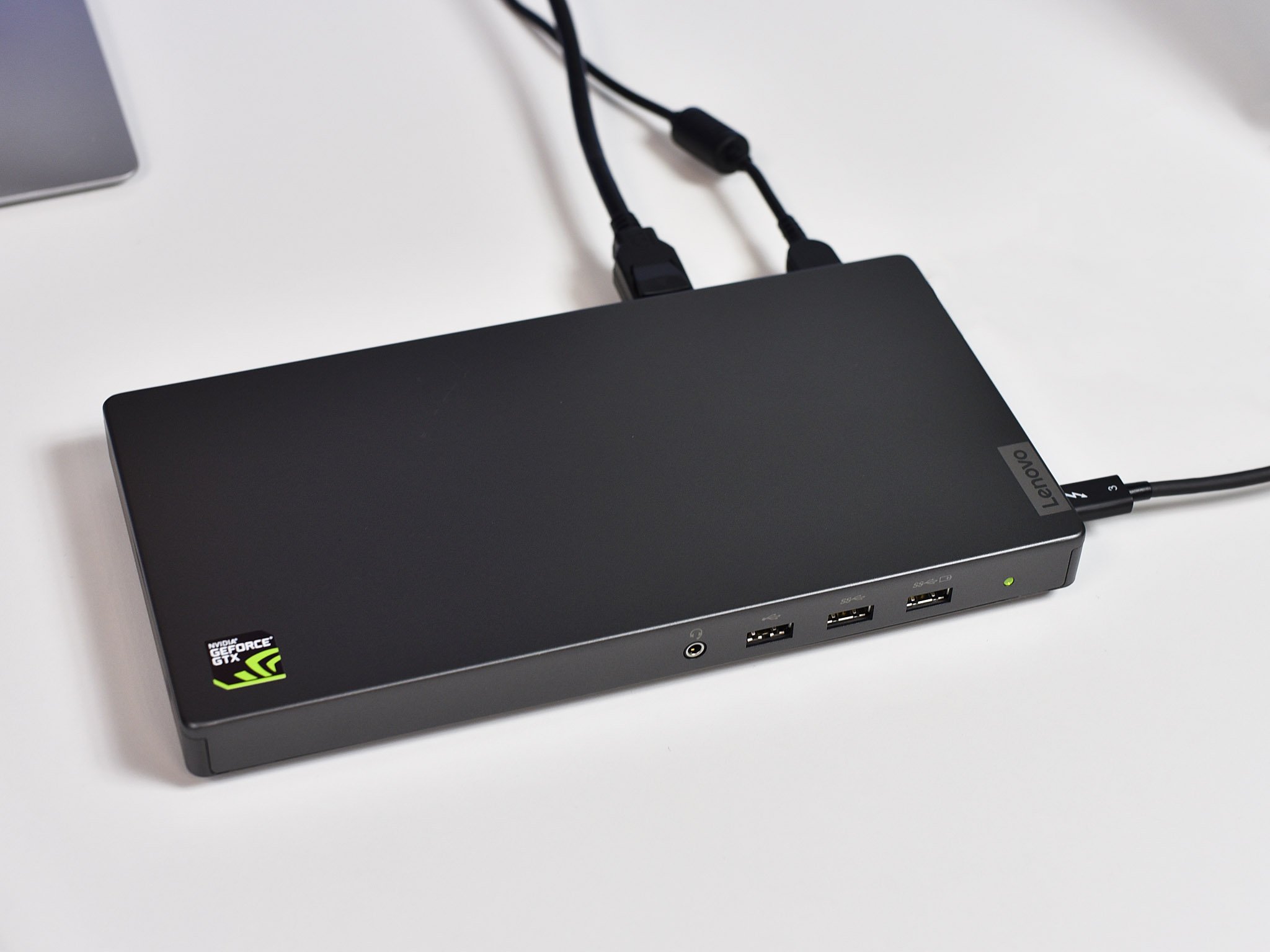
The Lenovo Thunderbolt 3 Graphics Dock works with all laptops that also have a Thunderbolt 3 Type-C port (sorry, Surface Book 2). It lets users add many more ports including multiple display outputs, Ethernet, and get a graphics boost from an NVIDIA GTX 1050.
| Category | Spec |
|---|---|
| Graphics | NVIDIA GTX 1050 with 4GB GDDR5 |
| Ports | 1x USB 2.02x USB 3.02x Display Port 1.21x HDMI 2.01x Gigabit Ethernet1x Audio out1x Thunderbolt 3 |
| Security | Kensington lock slot |
| Power | 170W charger (proprietary) |
| Weight | 1.5lbs (680g) |
It is surprising how small the dock is, including its 1.5-pound weight (without charger). While this dock is meant for the desktop and more permanent setups, it can easily fit into a bag or suitcase if one needs some extra power at a different location.
Build quality is decent, but nothing exceptional. The plastic materials used may make it feel a bit cheaper, but it also keeps the weight down versus an all-metal enclosure.
Who it's for
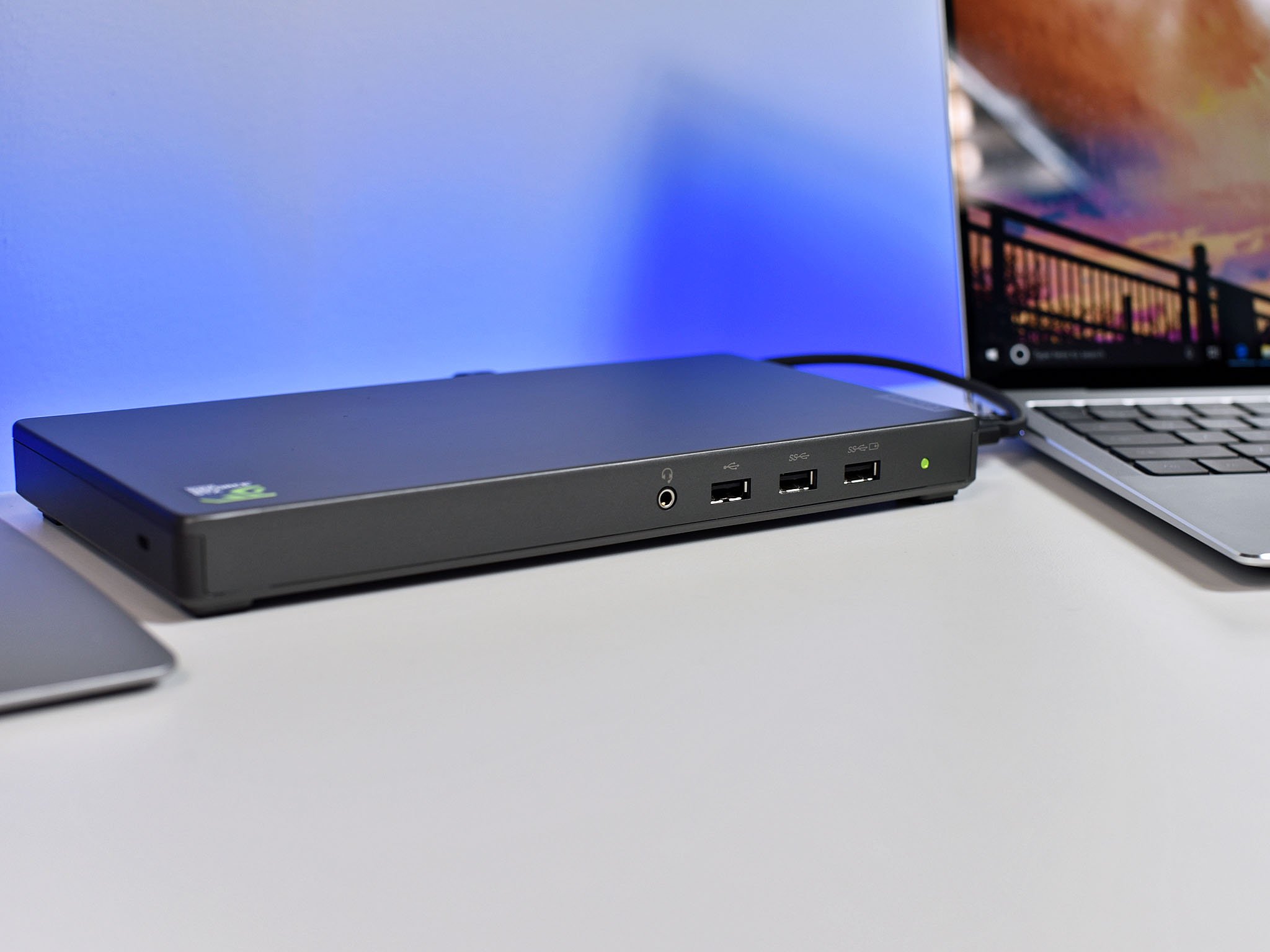
While the Lenovo Thunderbolt 3 Graphics Dock can be used for gaming its primary design is for owners of Lenovo ThinkPads – like the X1 Carbon or X1 Yoga – who need more graphics power in the office.
Get the Windows Central Newsletter
All the latest news, reviews, and guides for Windows and Xbox diehards.
With this dock, users can now have up to three 4K displays running off their laptops plus Ethernet and a handful of USB Type-A ports all while charging through a single USB Type-C Thunderbolt 3 cable.
This combo of features makes it ideal for creators who do some light video or photo editing, running Windows Mixed Reality, using large data sets in Microsoft Excel, compiling data, or app development.
Hardcore gamers will want something more like a Razer Core v2, which lets you pick your own GPU — like one from our roundup of the best graphics cards — and upgrade later. The downside with a Razer Core is price, $499 for Razer Core v2, or $299 for Razer Core X plus you still need to buy a video card. Neither system is as portable either as the Lenovo dock.
For graphics performance the GTX 1050 with 4GB of memory yields 75,000 on Geekbench 4.0, which is exactly in line with the Surface Book 2 13-inch, which has the same GPU. That is good enough for some light to medium-level gaming including many arcade fighters, side-scrollers, and first-person shooters.
What you'll hate about the Lenovo Thunderbolt 3 Graphics Dock
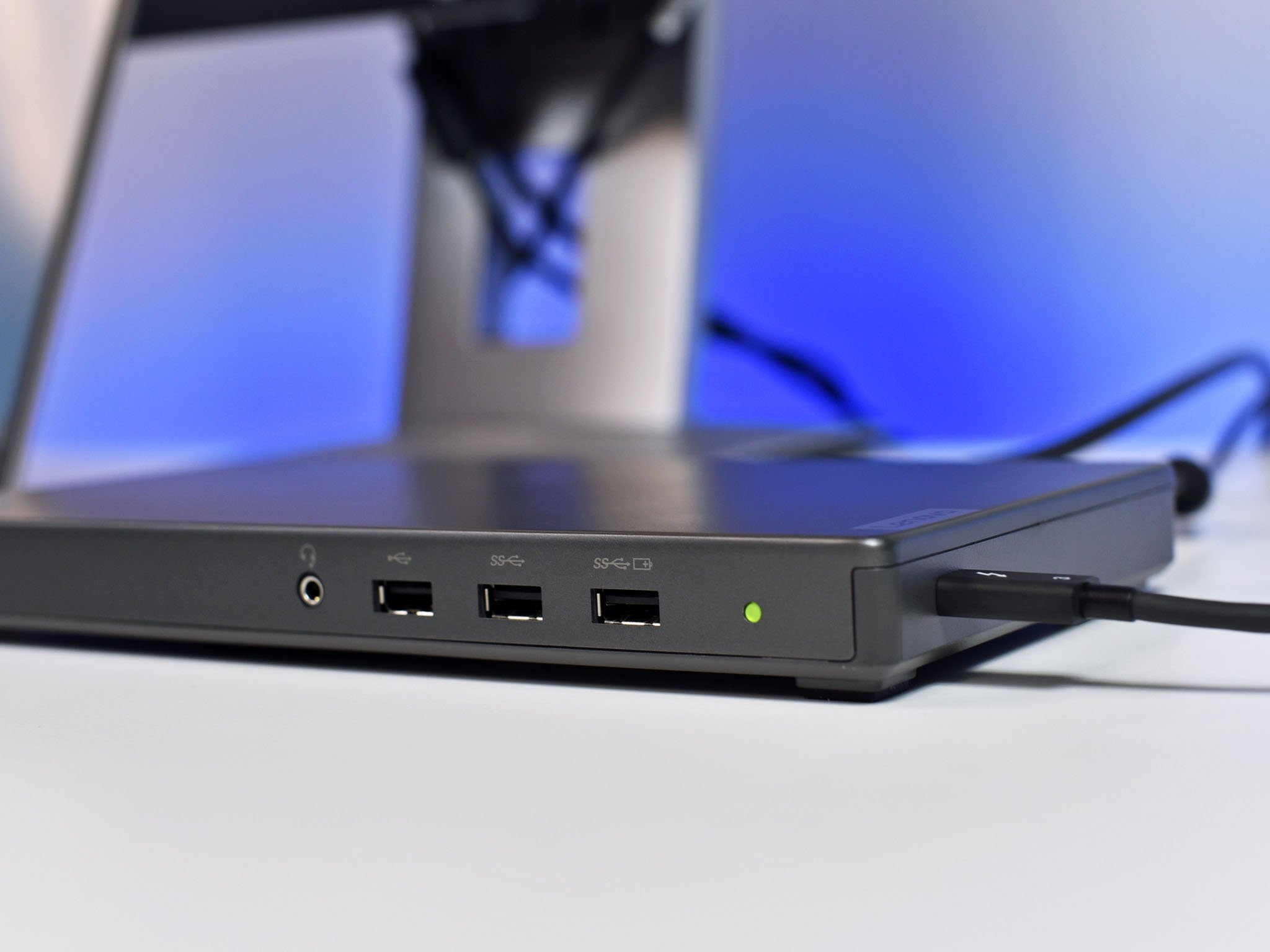
The price and no ability to upgrade the GPU immediately raise some flags. The price, however, is not that bad. Dell's popular Thunderbolt 3 dock TB16 is around $205, and that doesn't even have a GPU. Paying extra for an external GTX 1050 may be worth it for some versus no other option.
You can also find the dock on sale for $370, and corporate discounts through Lenovo can drop the price down to $340. That makes it a great purchase for IT departments, which is the primary audience here.
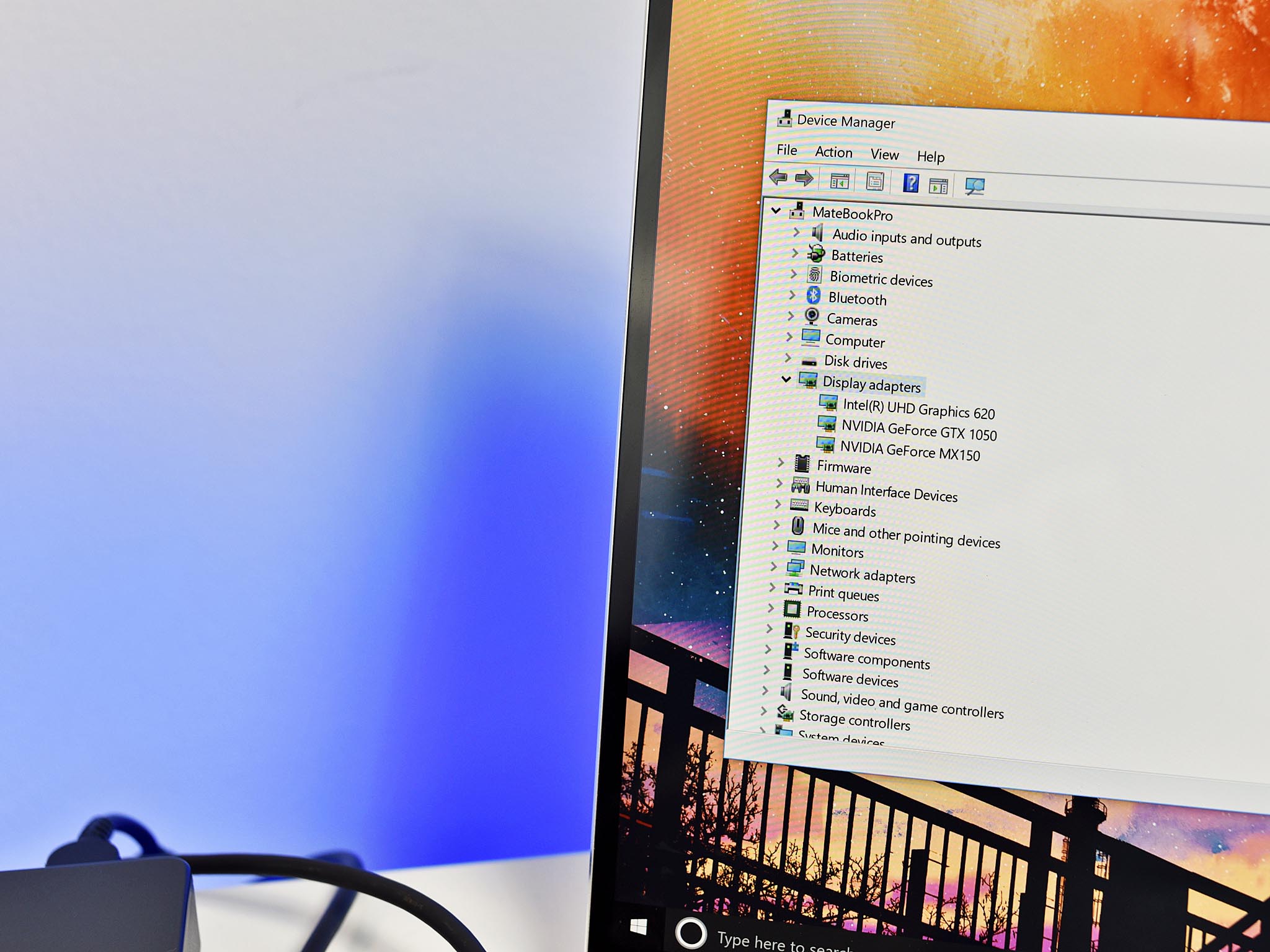
Not being able to upgrade the GPU is a bummer but expected for such a small and portable design. If you wanted something where you can swap out the cards and use full, desktop class GPUs, well, you have choices on the market for years already.
Software wise the Lenovo Thunderbolt 3 Graphics Dock can also be tricky. Even on a ThinkPad X1 Carbon, it had some initial setup hiccups including Windows crashing. Things get more complicated if your laptop has onboard graphics already like the Huawei MateBook X Pro – which works fine (so long as you use an external display).
Finally, if your laptop doesn't even have Thunderbolt 3 support like the Surface Book 2 or Surface Pro then don't bother as this won't work at all.
Should you buy the Lenovo Thunderbolt 3 Graphics Dock?
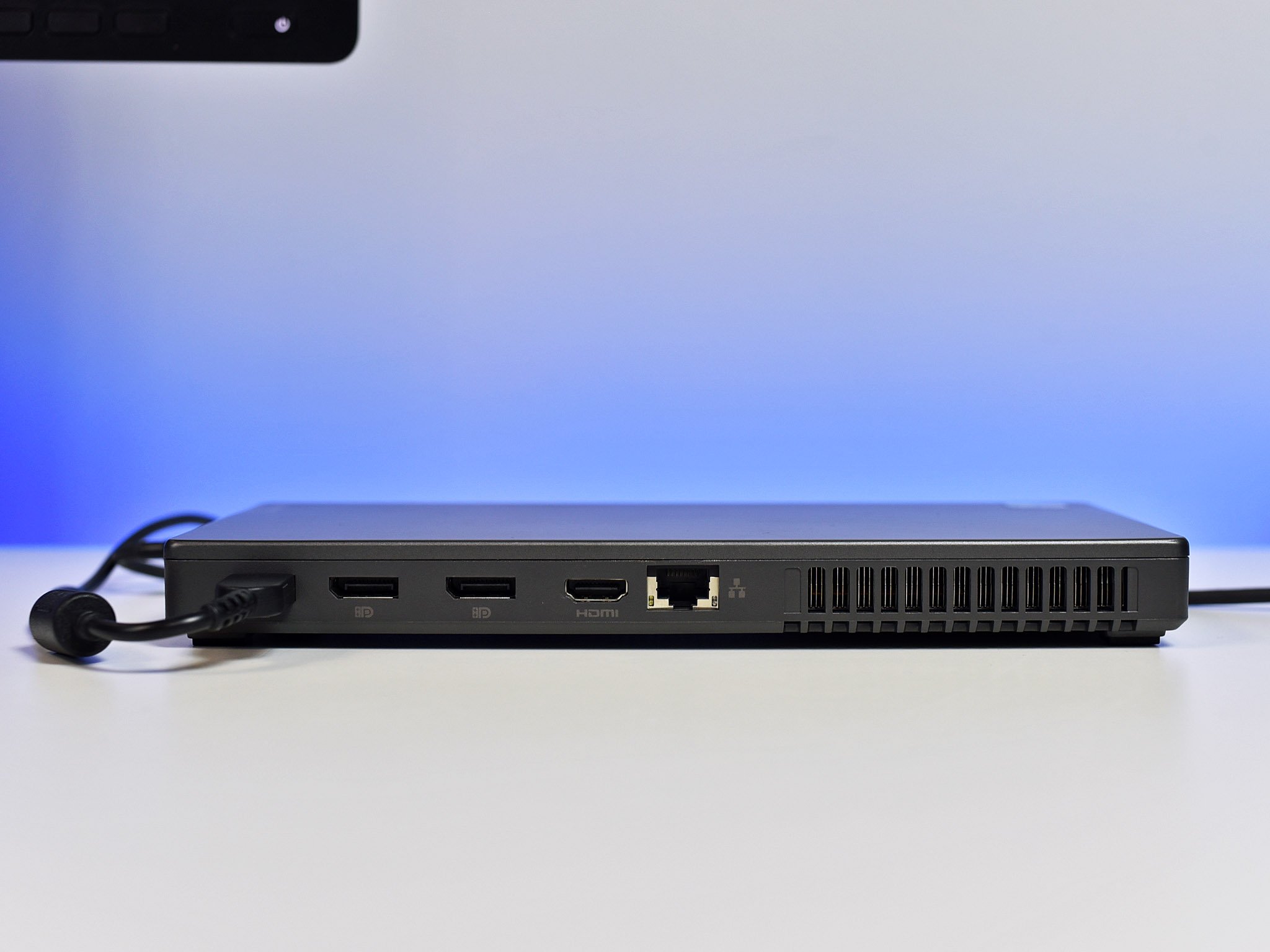
The Lenovo Thunderbolt 3 Graphics Dock is meant for corporate, IT, education and pro environments versus vanilla customers or gamers. From that perspective, the dock is a success. If you own a ThinkPad with Thunderbolt 3 support, this suddenly makes your laptop that much more powerful and useful.
Letting people carry around a 2.5lb laptop for work and then dock to a nice GPU like the GTX 1050 was simply not an option a few months ago – not without spending twice as much for a giant Razer Core.
While it's easy to look at this dock as just the GTX 1050 you are also paying for that Gigabit Ethernet, three USB ports, and three display outputs so you can plug in multiple 4K displays or power your Windows Mixed Reality headset. When taken as a package the dock is a good deal – albeit not cheap.
It's exciting to see for really the first-time external graphics coming to the business and enterprise user rather than just gamers. That's the second step in mainstreaming this technology for regular consumers. If people buy them, more will be made with additional options for graphics and more. That could be very exciting.

Daniel Rubino is the Editor-in-chief of Windows Central. He is also the head reviewer, podcast co-host, and analyst. He has been covering Microsoft since 2007 when this site was called WMExperts (and later Windows Phone Central). His interests include Windows, laptops, next-gen computing, and wearable tech. He has reviewed laptops for over 10 years and is particularly fond of 2-in-1 convertibles, Arm64 processors, new form factors, and thin-and-light PCs. Before all this tech stuff, he worked on a Ph.D. in linguistics, performed polysomnographs in NYC, and was a motion-picture operator for 17 years.
